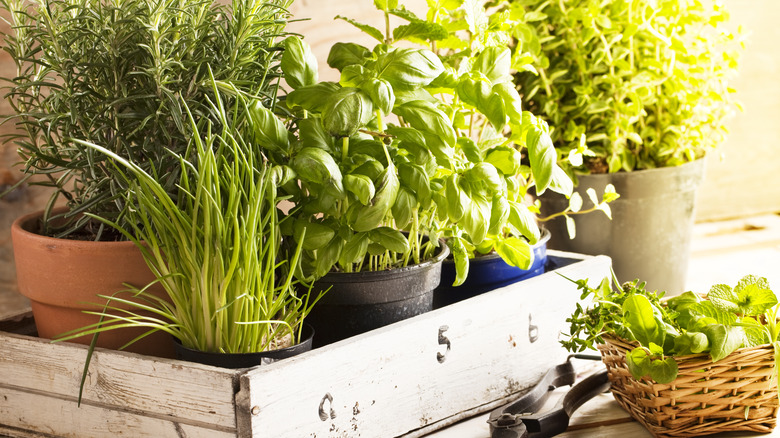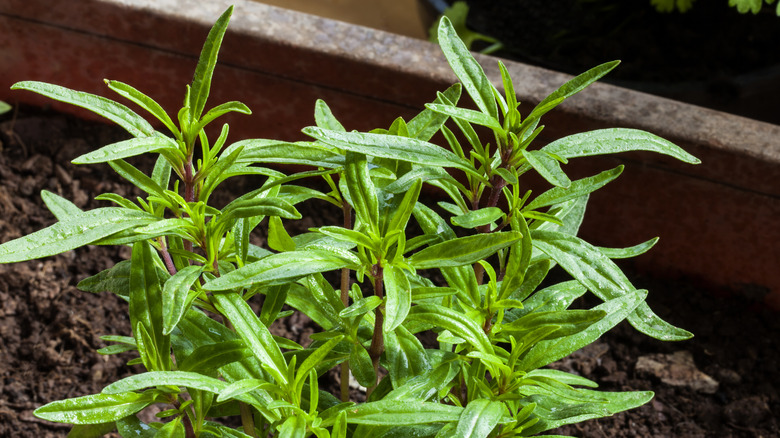Grow Mint's Less Popular (But Equally Tasty) Cousin In Your Garden
Many home chefs love the bright flavor of mint in a cup of tea or perhaps with roasted lamb, but a more obscure herb related to this fresh and familiar one could be an excellent addition to your herb garden. Summer savory, a star player in the well-loved "Herbes de Provence" blend, has a pepper-like flavor profile, including a bit of heat. It plays well with basil and other Mediterranean herbs. It contributes an element of mystery and allure to everyday dishes, thanks to being more obscure than common herbs like rosemary, sage, and thyme. Plus, it could be just an herb that's perfect for growing in your backyard garden.
Summer savory requires only a small footprint to grow — about 2 feet—and will not spread far; so if you don't have a garden or prefer to keep your herbs within reach of your kitchen, summer savory will grow well as a potted plant. There is also a winter savory version of the herb that is described as having a deeper flavor profile. Savory was initially grown in the south of Europe through the north of Africa and was well-loved by the Romans. It puts out ample flowers when in bloom, which bees, butterflies, and other helpful insects love. Summer savory is a great way to bring more pollinators into your yard and garden.
Tips for success
If you are sold on trying this somewhat unconventional herb, luckily for you, summer savory is simple to grow with the correct conditions. It can easily grow in a wide range of climates, such as USDA zones 1 through 11. Savory grows well from seeds, which do not need to be planted deeply in the soil to thrive (they like access to sunlight). If you're growing from seeds, once the savory seedlings have four true leaves, you can place them in their own containers and then plant outside following the final frost in early spring.
Summer savory needs nutrient-rich and well-drained soil, moderate watering, and full sun to thrive. Plan for six hours or more of direct sunlight daily, or consider growing it indoors with a grow light if your location is particularly cloudy. Maintain healthy growth for the savory by trimming the herbs routinely to encourage its overall strength, and grab a bunch whenever you need a fresh punch in your dish. Prior to the plant flowering, you can cut back the herb and use it as a fresh ingredient in cooking or dry the savory upside down in a dry and dark space inside. You may also wish to harvest summer savory seeds and use them the following planting season. However, you may never have to, thanks to it being an effortlessly self-seeding annual. Once you successfully plant savory, it should pop up around the garden in the future.

